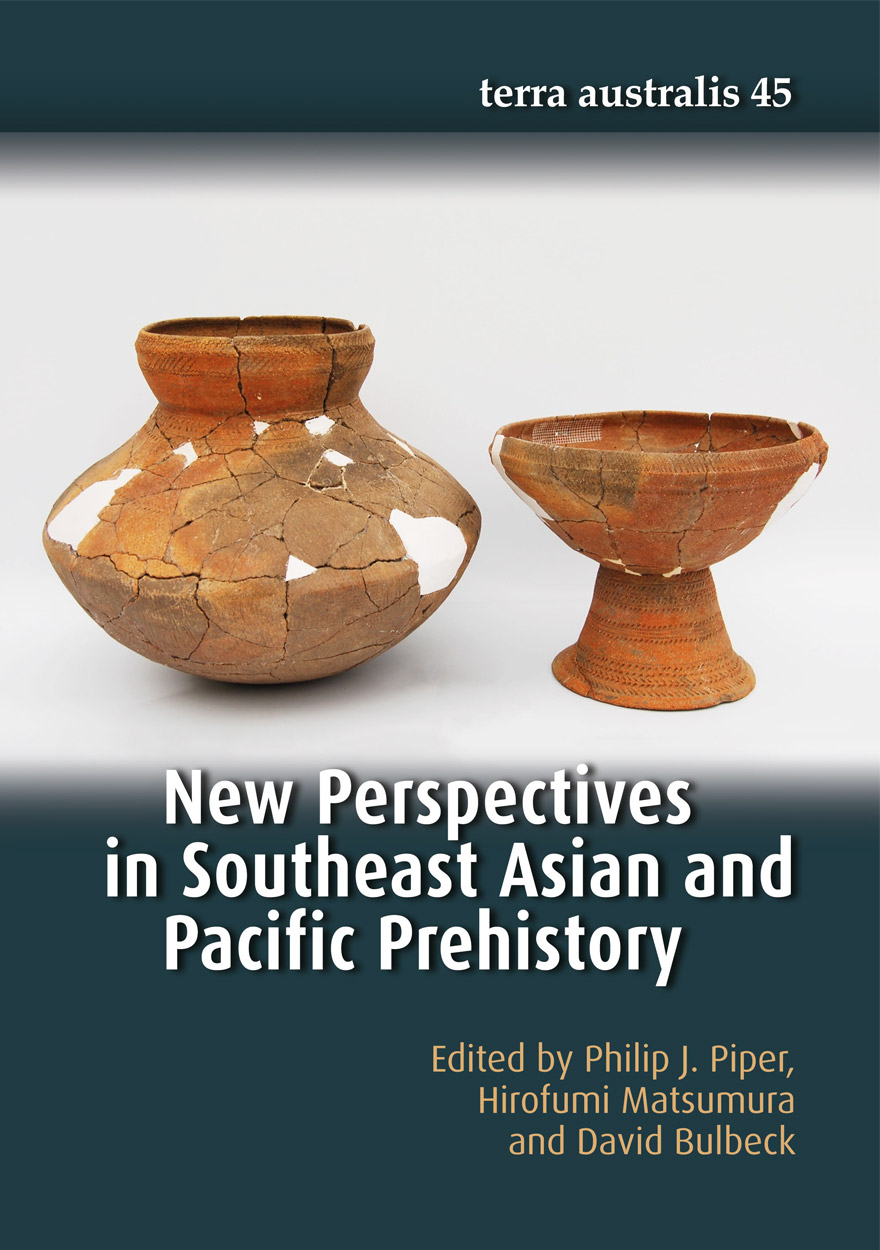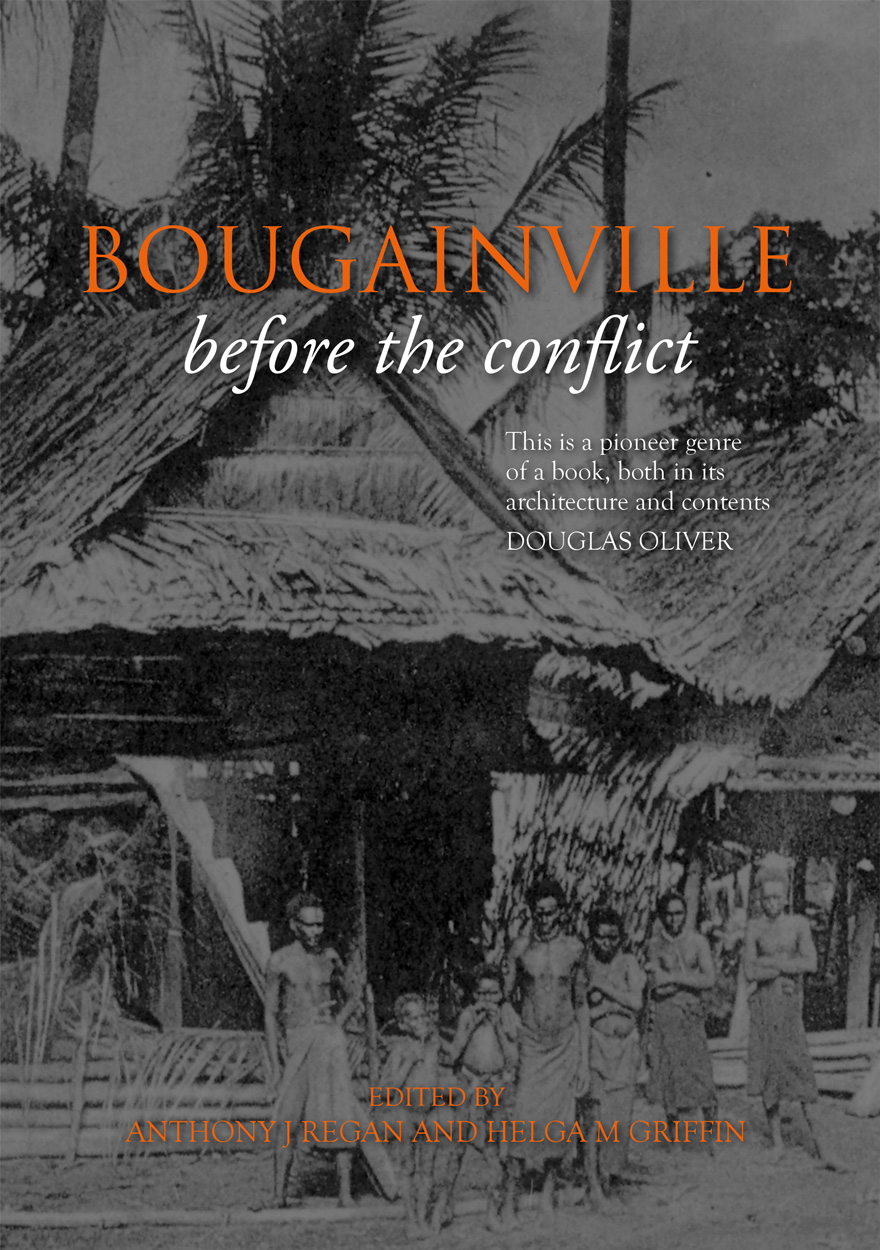Search titles
Displaying results 11 to 20 of 46.

Drawing in the Land »
Rock Art in the Upper Nepean, Sydney Basin, New South Wales
Authored by: Julie Dibden
Publication date: February 2019
Drawing in the Land offers an important contribution to the field of rock art research and Australian archaeology. It provides a detailed study of the previously under-examined rock art of the Hawkesbury/Nepean area of New South Wales. The study presents a detailed historiography of Australian rock art research and, through the lens of landscape archaeology, offers an innovative contribution to rock art studies in the wider Sydney Basin.
The volume’s theoretical focus on materiality, embodied practice and performance allows for the charting of ideational change and provides a unique contribution to the late Holocene archaeology of NSW and contact archaeology within Australia more broadly.

The Archaeology of Sulawesi »
Current Research on the Pleistocene to the Historic Period
Publication date: November 2018
The central Indonesian island of Sulawesi has recently been hitting headlines with respect to its archaeology. It contains some of the oldest directly dated rock art in the world, and some of the oldest evidence for a hominin presence beyond the southeastern limits of the Ice Age Asian continent. In this volume, scholars from Indonesia and Australia come together to present their research findings and views on a broad range of topics. From early periods, these include observations on Ice Age climate, life in caves and open sites, rock art, and the animals that humans exploited and lived alongside. The archaeology presented from later periods covers the rise of the Bugis kingdom, Chinese trade ceramics, and a range of site-based and regional topics from the Neolithic through to the arrival of Islam. This carefully edited volume is the first to be devoted entirely to the archaeology of the island of Sulawesi, and it lays down a baseline for significant future research.
Peter Bellwood
Emeritus Professor
The Australian National University

The Archaeology of Rock Art in Western Arnhem Land, Australia »
Publication date: November 2017
Western Arnhem Land, in the Top End of Australia’s Northern Territory, has a rich archaeological landscape, ethnographic record and body of rock art that displays an astonishing array of imagery on shelter walls and ceilings. While the archaeology goes back to the earliest period of Aboriginal occupation of the continent, the rock art represents some of the richest, most diverse and visually most impressive regional assemblages anywhere in the world. To better understand this multi-dimensional cultural record, The Archaeology of Rock Art in Western Arnhem Land, Australia focuses on the nature and antiquity of the region’s rock art as revealed by archaeological surveys and excavations, and the application of novel analytical methods. This volume also presents new findings by which to rethink how Aboriginal peoples have socially engaged in and with places across western Arnhem Land, from the north to the south, from the plains to the spectacular rocky landscapes of the plateau. The dynamic nature of Arnhem Land rock art is explored and articulated in innovative ways that shed new light on the region’s deep time Aboriginal history.

Ten Thousand Years of Cultivation at Kuk Swamp in the Highlands of Papua New Guinea »
Publication date: July 2017
Kuk is a settlement at c. 1600 m altitude in the upper Wahgi Valley of the Western Highlands Province of Papua New Guinea, near Mount Hagen, the provincial capital. The site forms part of the highland spine that runs for more than 2500 km from the western head of the island of New Guinea to the end of its eastern tail. Until the early 1930s, when the region was first explored by European outsiders, it was thought to be a single, uninhabited mountain chain. Instead, it was found to be a complex area of valleys and basins inhabited by large populations of people and pigs, supported by the intensive cultivation of the tropical American sweet potato on the slopes above swampy valley bottoms.
With the end of World War II, the area, with others, became a focus for the development of coffee and tea plantations, of which the establishment of Kuk Research Station was a result. Large-scale drainage of the swamps produced abundant evidence in the form of stone axes and preserved wooden digging sticks and spades for their past use in cultivation. Investigations in 1966 at a tea plantation in the upper Wahgi Valley by a small team from The Australian National University yielded a date of over 2000 years ago for a wooden stick collected from the bottom of a prehistoric ditch.
The establishment of Kuk Research Station a few kilometres away shortly afterwards provided an ideal opportunity for a research project.

New Perspectives in Southeast Asian and Pacific Prehistory »
Publication date: March 2017
‘This volume brings together a diversity of international scholars, unified in the theme of expanding scientific knowledge about humanity’s past in the Asia-Pacific region. The contents in total encompass a deep time range, concerning the origins and dispersals of anatomically modern humans, the lifestyles of Pleistocene and early Holocene Palaeolithic hunter-gatherers, the emergence of Neolithic farming communities, and the development of Iron Age societies. These core enduring issues continue to be explored throughout the vast region covered here, accordingly with a richness of results as shown by the authors.
Befitting of the grand scope of this volume, the individual contributions articulate perspectives from multiple study areas and lines of evidence. Many of the chapters showcase new primary field data from archaeological sites in Southeast Asia. Equally important, other chapters provide updated regional summaries of research in archaeology, linguistics, and human biology from East Asia through to the Western Pacific.’
Mike T. Carson
Associate Professor of Archaeology
Micronesian Area Research Center
University of Guam

An Archaeology of Early Christianity in Vanuatu »
Kastom and Religious Change on Tanna and Erromango, 1839–1920
Authored by: James Flexner
Publication date: December 2016
Religious change is at its core a material as much as a spiritual process. Beliefs related to intangible spirits, ghosts, or gods were enacted through material relationships between people, places, and objects. The archaeology of mission sites from Tanna and Erromango islands, southern Vanuatu (formerly the New Hebrides), offer an informative case study for understanding the material dimensions of religious change. One of the primary ways that cultural difference was thrown into relief in the Presbyterian New Hebrides missions was in the realm of objects. Christian Protestant missionaries believed that religious conversion had to be accompanied by changes in the material conditions of everyday life. Results of field archaeology and museum research on Tanna and Erromango, southern Vanuatu, show that the process of material transformation was not unidirectional. Just as Melanesian people changed religious beliefs and integrated some imported objects into everyday life, missionaries integrated local elements into their daily lives. Attempts to produce ‘civilised Christian natives’, or to change some elements of native life relating purely to ‘religion’ but not others, resulted instead in a proliferation of ‘hybrid’ forms. This is visible in the continuity of a variety of traditional practices subsumed under the umbrella term ‘kastom’ through to the present alongside Christianity. Melanesians didn’t become Christian, Christianity became Melanesian. The material basis of religious change was integral to this process.

Journeys into the Rainforest »
Archaeology of Culture Change and Continuity on the Evelyn Tableland, North Queensland
Authored by: Åsa Ferrier
Publication date: November 2015
This monograph presents the results of archaeological research that takes a longitudinal approach to interpreting and understanding Aboriginal–European contact. It focuses on a small but unique area of tropical rainforest in far north Queensland’s Wet Tropics Bioregion, located within the traditional lands of the JirrbalAboriginal people on the Evelyn Tableland. The research integrates a diverse range of data sources: archaeological evidence recovered from Aboriginal open sites occupied in the pre- to post-contact periods, historical documents of early ethnographers, settlers and explorers in the region, supplemented with Aboriginal oral history testimony. Analyses of the archaeological evidence excavated from three open sites facilitated the identification of the trajectories of culture change and continuity that this investigation focused on: Aboriginal rainforest material culture and technology, plant subsistence strategies, and rainforest settlement patterns.
Analyses of the data sets demonstrate that initial use of the rainforest environment on the Evelyn Tableland occurred during the early Holocene period, with successful adaptation and a change towards more permanent Aboriginal use of the rainforest becoming established in the late Holocene period. European arrival and settlement on traditional Aboriginal land resulted in a period of historical upheaval for the Aboriginal rainforest people. Following an initial period of violent interactions and strong Aboriginal resistance from the rainforest, Jirrbal Aboriginal people continued to adapt and transform their traditional culture to accommodate for the many changes forced upon them throughout the post‑contact period.

Long History, Deep Time »
Deepening Histories of Place
Edited by: Ann McGrath, Mary Anne Jebb
Publication date: August 2015
The vast shape-shifting continent of Australia enables us to take a long view of history. We consider ways to cross the great divide between the deep past and the present. Australia’s human past is not a short past, so we need to enlarge the scale and scope of history beyond 1788. In ways not so distant, these deeper times happened in the same places where we walk today. Yet, they were not the same places, having different surfaces, ecologies and peoples. Contributors to this volume show how the earth and its past peoples can wake us up to a sense of place as history – as a site of both change and continuity.
This book ignites the possibilities of what the spaces and expanses of history might be. Its authors reflect upon the need for appropriate, feasible timescales for history, pointing out some of the obstacles encountered in earlier efforts to slice human time into thematic categories. Time and history are considered from the perspective of physics, archaeology, literature, western and Indigenous philosophy. Ultimately, this collection argues for imaginative new approaches to collaborative histories of deep time that are better suited to the challenges of the Anthropocene. Contributors to this volume, including many leading figures in their respective disciplines, consider history’s temporality, and ask how history might expand to accommodate a chronology of deep time. Long histories that incorporate humanities, science and Indigenous knowledge may produce deeper meanings of the worlds in which we live.

Bougainville before the conflict »
Edited by: Anthony J Regan, Helga M Griffin
Publication date: August 2015
One of the most beautiful island groups of the Pacific, Bougainville has a remarkable history. Tragically, it is as the site of devastating civil conflict that Bougainville is perhaps best known.
In exploring the rich environmental, cultural and social heritage of Bougainville before the conflict, this collection provides an insight into the long-term causes of the crisis. In doing so, it surveys such topics as Bougainville’s prehistory and traditional cultures, the impact of German and Australian colonialism, the attempts by disparate local cultures to find a common identity, the assertion of political autonomy in the face of coercion to integrate with Papua New Guinea, and contemporary efforts to resolve conflict and plan a viable future.
A landmark collaboration between expert commentators on Bougainville and Bougainvilleans themselves, this volume provides a comprehensive picture for those seeking to understand Bougainville’s history and future directions.
Bougainville before the conflict was published in association with the State, Society and Governance in Melanesia Project, which is supported by The Australian National University and the Commonwealth of Australia.

Contextualising the Neolithic Occupation of Southern Vietnam »
The Role of Ceramics and Potters at An Son
Authored by: Carmen Sarjeant
Publication date: November 2014
Excavated in 2009, An Son, Long An Province, southern Vietnam has been dated to the second millennium BC, with evidence for neolithic occupation and burials. Very little is known about the neolithic period in southern Vietnam, and the routes and chronology for the appearance of cultivation, domestic animals, and ceramic and lithic technologies associated with sedentary settlements in mainland Southeast Asia are still debated. The ways in which the ceramic material culture at An Son conforms to the wider neolithic expression observed in Southeast Asia is investigated, and local and regional innovations are identified. The An Son ceramic assemblage is discussed in great detail to characterise the neolithic occupation, while considering the nature of craft production, manufacturing methods and the transference of traditions.
Contextualising the neolithic in southern Vietnam is conducted through a comparative study of material culture between An Son and the sites of Bến Ðò, Bình Đa, Cù Lao Rùa, Cái Vạn, Cầu Sắt, Đa Kai, Đình Ông, Lộc Giang, Rạch Lá, Rạch Núi and Suối Linh, all in southern Vietnam. Another analysis is presented to contextualise An Son in the wider neolithic landscape of mainland Southeast Asia, between An Son and Ban Non Wat, early Ban Lum Khao, early Ban Chiang, early Non Nok Tha, Khok Charoen, Tha Kae, Khok Phanom Di, Nong Nor (phase 1), Samrong Sen, Laang Spean, Krek, Bàu Tró, Mán Bạc and Xóm Rền. The aspects of material culture at An Son that appear to have ancestral links are considered in this research as well as local interaction spheres.



